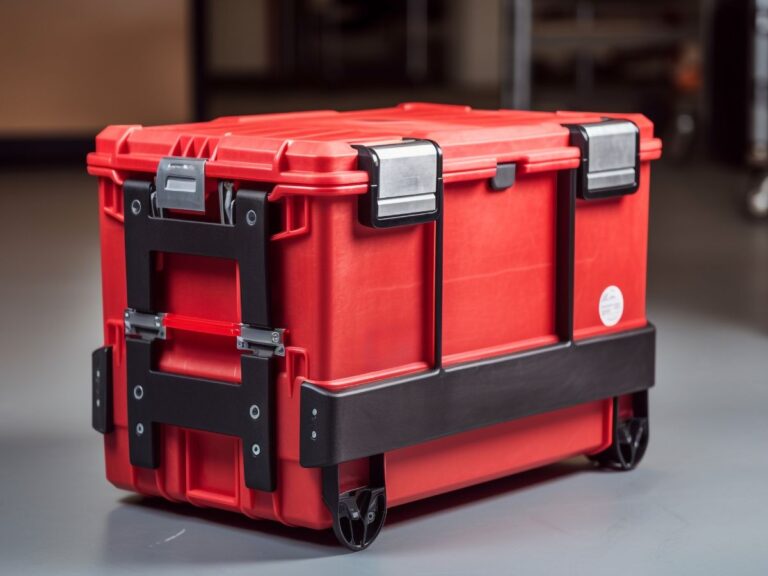Are you tired of battling clutter or yearning for a...
Read MoreMiter Saw vs. Table Saw: Which One Suits You Best?
- WWPN Staff
Given how power saws have transformed the woodworking industry, humble DIYers have started working on previously too complex and challenging projects.
Among all power tools, two that have given DIYers and seasoned professionals their woodworking muscle strength are miter and table saws. The ultimate level of carpentry demands having both in the toolbox.
However, the best way to be sure is to understand each tool. This guide walks you through the difference between a miter saw and a table saw.
What is Miter Saw?
Whether it be a carpenter diligently working in his workshop or a DIYer who enjoys woodwork as a hobby, a miter saw is an ideal tool for both. The miter saw has a circular blade and is hinge-mounted so that it swings down to cut the material.
The hinge (fixed in place) enables the circular blade to make neat and precise cuts in a highly controlled fashion. Though miter saws are helpful for flat ends, they can also be rotated to the left or right for angled cuts.
The saw’s versatility makes it ideal for precision woodwork projects. Even people new to woodworking can use a miter saw to learn. The process goes like this – a guard covers the saw blade. The material (wood) for cutting sits on the miter table and hits back against a metal wall or the back fence.
Pros and Cons of Miter Saw
Let’s understand the many benefits of using a miter saw –
- Repeatable Swift Cuts
Setting up the miter saw is a crucial step. You need not worry about the cutting process when it is fixed securely. The saw makes sharp, identical cuts that are easily repeatable.
- Less Intimidating
As mentioned earlier, the miter saw is an ideal tool for those new to woodwork and cutting. It is secure and stable, and the blade is well-protected by a guard, which promises safety from injuries. If you wish for the perfect tool for practicing woodwork, the miter saw is the one for you.
- Clean and Precise Cuts
Not only is the miter saw a highly safe tool, but it also makes precise and neat cuts. This mainly happens because the blade locks the angle which you set. Plus, it offers stops at standard angles. You can achieve the woodworking accuracy you seek.
- Ideal for Those with Restricted Mobility
With a miter saw, there is no need to control a circular saw’s weight. Moreover, you do not need to stretch it across a table as a table saw. This makes it a perfect choice for people with limited or restricted mobility.
You can use a miter saw for performing precision woodworking, such as making photo frames, interior trimming, etc. The tool’s motion range and controlled movements make it suitable for those with weak arm strength.
Now, let’s get into some of the cons of a miter saw –
- Bulky and Heavy
The cutting process does not require much muscle strength when it comes to lightness. But, the miter saw in itself is a heavy tool. Carrying it about the shop can be challenging compared to a circular saw.
- It Takes Up Much Floor Space
Typically, longer boards are unsupported by a miter table. For this, temporary support is needed to set up a saw station. This may require quite a bit of shop space.
- Restrictions on Material Width
Though a miter saw is a fantastic tool for making exact and clean cuts, there is a width limit to which it can function. If you wish to cut broader materials, you need to use a different tool.
What is Table Saw?
If you want a power tool that makes it easy to create accurate straight cuts, then the table saw should be your pick. It is primarily a fixed or stationary circular saw on a horizontal table.
The saw itself might be protruding, raised, or tilted with its head peeking through a slot over the table. It is the best tool for making long cuts. This makes it suitable for both basic woodworking as well as complex cutting.
Denser materials such as plywood, particle board, plastic, and metals can be cut using a table saw.
Pros and Cons of Table Saw
Listed below are some of the significant benefits of using a table saw –
- High-Speed Cuts
When it comes to cutting projects, significantly larger and complex ones, you need a tool that cuts swiftly and efficiently. The good news is that the table saw enables you to make speedy and accurate cuts safely.
Though each table saw’s RPM varies, it usually ranges from 3000 to 5000 RPM, which is dramatically high. Hence, efficiency is a given.
- Accuracy
Though saws come in all kinds, they are not all equally suitable. For instance – handsaws can often be messy and time-consuming to work with. Table saws offer a high degree of accuracy or precision.
They come with a ruler on the bench’s side or between the blade and the fence to ensure desired cuts are made.
- Highly Versatile
Compared to miter saws or even circular saws and jigsaws, table saws are undoubtedly heavier and larger. Nonetheless, these saws are capable of performing a wide variety of tasks.
They are used mainly by professional furniture manufacturers who need to cut different kinds of materials precisely.
Let’s get to some of the cons of this power tool –
- Size
Size can be a significant disadvantage of a table saw. They are usually large and bulky and can only be used in a workshop. If you need to carry one to a job site, you can invest in portable ones or a movable outfeed stand.
However, they carry their risks since a rigid stand offers stability and security.
- Cutting Only Moveable Wood
Whatever material you use for cutting should be easily lifted and moved. If you cannot move the sheet or pieces, the saw will have no use.
- Injuries
Blade contact injuries with table saws are the most common. Though modern versions are now available that automatically stop if your finger gets too close, traditional ones still carry this danger.
One wrong move, and you could lose your fingers.
Best Uses of Miter Saw vs. Table Saw
Now, the miter saw and table saw differ in how each can be used. Let’s look at some of these uses.
Uses Of Miter Saw
The miter saw is widely used to cut wood trimmings and molding. However, wood is the only material it can cut.
You can also use it to cut wood, metal, and plastics. Just keep in mind that the type of blade will differ for each material. In every material, the primary purpose of the miter saw is to make accurate angled cuts.
Uses Of Table Saw
Table saws are highly versatile tools used to rip and crosscut wood grain. The main purpose of a table saw is ripping – cutting into tinier, easier-to-work-with pieces. It can also be used to make bevel cuts, cut grooves and rabbets, and create various joints.
Even in the case of a table saw, the blade used for each purpose will differ. For instance – crosscut blades have smaller teeth than rip blades with large chisel-like teeth. Even combination blades are available that can be used to cut both across and with the wood grain.
Safety of Miter Saw vs. Table Saw
Let us understand the safety level offered by each of the saws.
Safety Of Miter Saw
In the case of a miter saw, the blade is protected, hinged, and enables controlled movements. This does make it safe to an extent.
However, it can cause severe injuries if not used properly. Some common beginner miter saw hazards include – dust, slip-ups, too much noise, contact with moving timber, entanglement due to the impact of the blade, and tripping due to sudden movement.
You must keep your hands at least six inches away from the blade to stay safe. When the miter saw is sliding, push the blade away from you, not the other way around! Raise the blade only after it has stopped moving altogether. Finally, keep the saw unplugged, and the blade lowered when not used.
Safety Of Table Saw
Table saws are among the most dangerous power tools. They can deliver catastrophic injuries if not handled with care. For instance – the blade’s teeth can easily cut off fingers— and blade contact injuries are among the most common with this tool.
If you’re woodworking with a table saw, remember to wear safety equipment (no compromises!). Keep the table on which the saw rests and the surrounding area clean of sawdust. Remember to check through the saw owner’s manual to understand its safety features.
While working with large timber pieces or plywood, set the saw up on a large table or an outfeed stand. Finally, ensure you turn off the power supply before changing the blade, and never start with a saw when the blade is still engaged! As an additional tip – do not reach over to make blade adjustments until the saw has come to a complete halt.
Stand Difference of Miter Saw vs. Table Saw
Another area where the two saws differ is the stand used for cutting.
Stand Of Miter Saw
For a miter saw, a good stand should come with rollers and outfeed stands. This will allow you to make precise cuts even when the material length is significant. Remember that if the stand is heavy, choose one with wheels to quickly move it in and out of a trailer.
Stand Of Table Saw
On the other hand, table saw stands need to be even more robust and secure because they are way more dangerous and heavier. Gravity-rise stands are available for table saws as well. However, the same must be able to withstand the weight easily and should not move while cutting!
A gravity-rise stand works best for saws carried to a job site. But, if you’re working with a table saw in your shop, opt for a rigid stand. Even cast iron stands are available, featuring heavy-duty casters for better support.
This way, you can wheel and move around the heaviest table saws.
Blade of Miter Saw vs. Table Saw
There is a major difference between the two tools in terms of the blade as well.
Blade Of Miter Saw
Table saws used in job sites usually come with a 10-inch or at least 8.25-inch blade. This length helps to rip through sheets and floors easily.
As far as a miter saw is concerned, its blade usually sits in either of the categories – a 10-inch average-sized blade or a compact 7.25-inch blade for job sites. The smaller blade helps with minor wood trimming tasks, while the average-sized blade is suitable for cutting fences and molding.
Miter saws are also available with blades 12 inches or larger, but these are less necessary. The 10-inch blade works just as well as a 12-inch counterpart.
Blade Of Table Saw
Currently, table saw manufacturers are compelled to increase the size of the table along with the blade. So, even compact table saws may come with a smaller blade, typically 8.25 inches. These blades are suitable for minor woodworking projects.
But table saws are also used to manufacture cabinets and furniture. The blade size can range from 16 inches or more in such cases.
Price of Miter Saw vs. Table Saw
Price Of Miter Saw
You can find a compact miter saw priced at $100. These are usually suitable for home-based woodwork projects.
However, if you were to opt for a sliding miter saw that contractors generally use, the price could go as high as $1900.
Price Of Table Saw
Naturally, out of the two saws, a table saw is more costly than a miter saw. For instance – table saws, if they come with a detachable stand, start around $200. But, high-end table saws used to manufacture furniture and cabinets can range between $450 and $2800.
Wrapping Up
Did the article help you decide which of the two power tools is ideal for your woodworking endeavors? To summarize the answer, if you need a single-stop solution that works best for ripping and crosscutting, opt for a table saw as it ranks high on the versatility table.
If you’re a DIYer just beginning to understand woodwork or want to try it out, a compact miter saw is an ideal tool. In contrast, if you’re heavily involved in flooring projects with excessive crosscutting, have both tools in your arsenal.
You can quickly start with the miter saw to make crosscuts, then rip the planks into desired pieces with the table saw! In any case, choose the saw itself wisely, thoroughly going through the specifications and comparing them with your needs.




